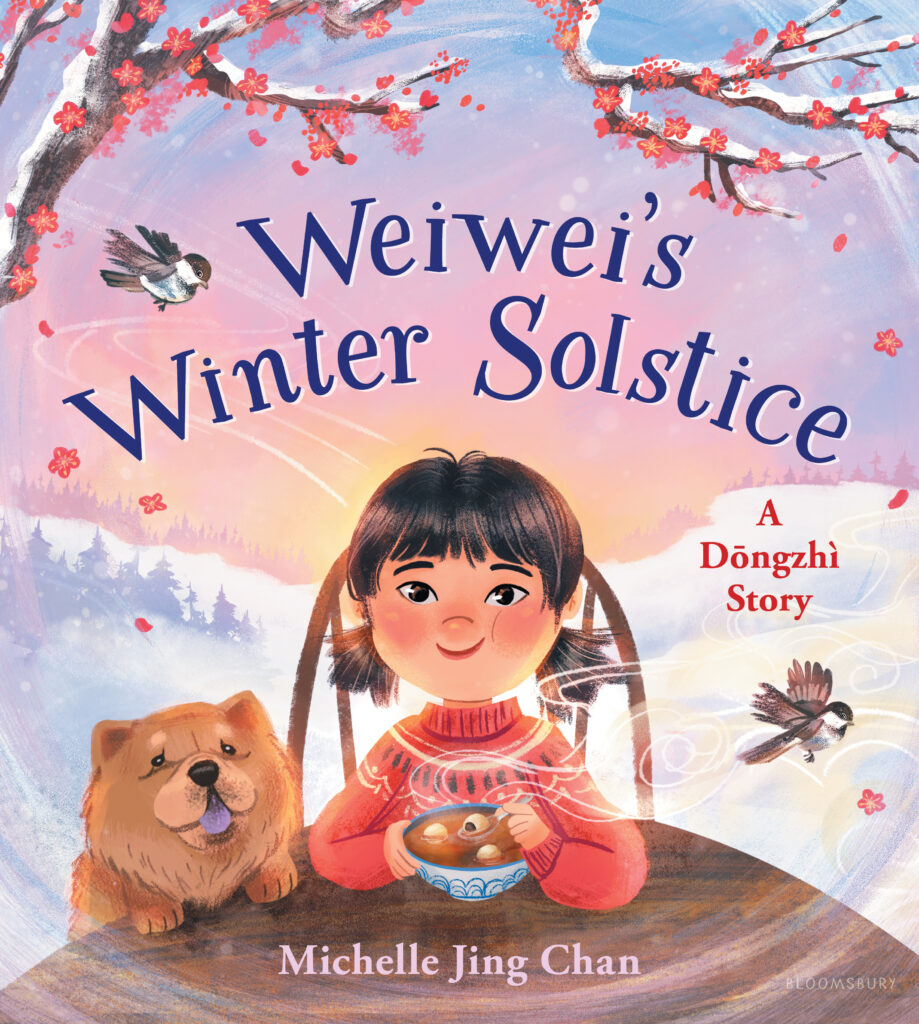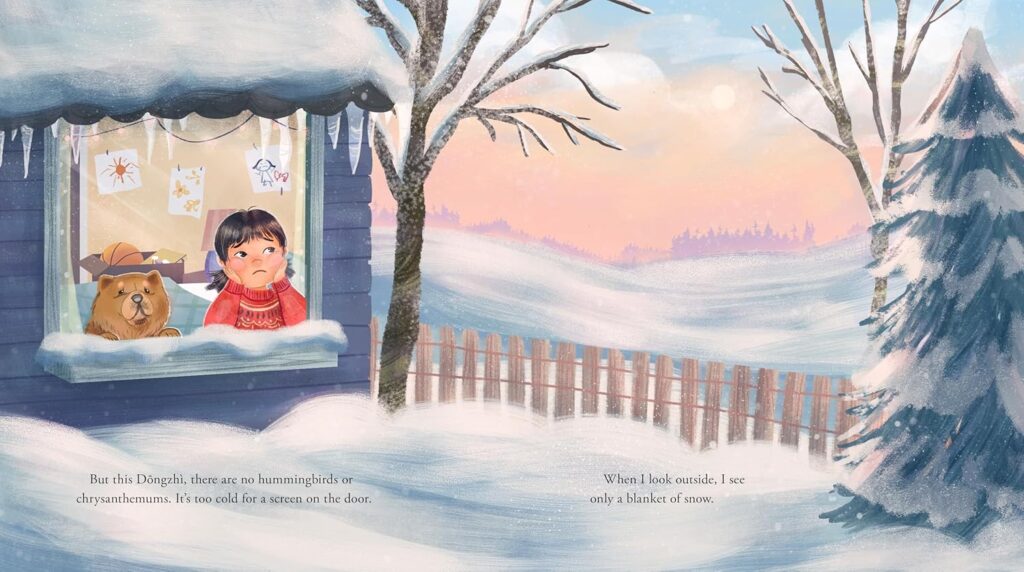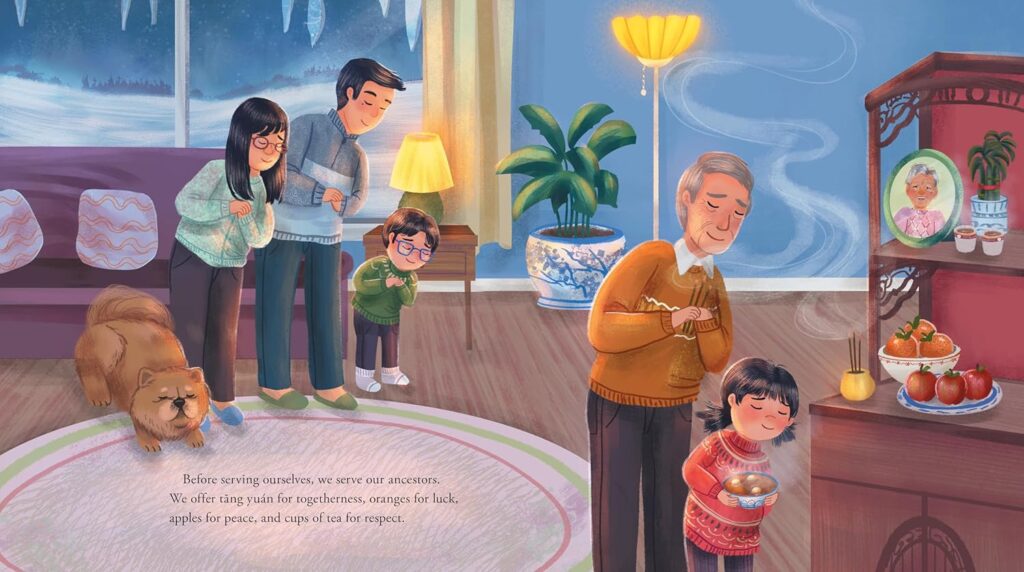The Longest Night, The Longest Journey, The Brightest Hope: An Interview with Michelle Jing Chan
Winter solstice is the longest night and shortest day of the year. It’s a time when darkness feels overwhelming, yet within that darkness lies the promise of returning light. As parents, we know well about long nights: the sleepless hours with newborns, the worry-filled evenings, the quiet moments when we wonder if we’re doing enough to help them flourish.
Today, I’m excited to share a conversation with author-illustrator Michelle Jing Chan, whose picture book “Weiwei’s Winter Solstice” captures these themes of finding hope in darkness, celebrating the journey of belonging, and creating home through the traditions we pass down to our children.
Warmth in the Longest Winter Night
Michelle’s story begins, fittingly, on a snowy winter solstice in her hometown of Colorado. “I wrote this story on a snowy Dōngzhì during a visit to my hometown,” she shares. “Although my small, conservative hometown didn’t have a lot of other Asian residents, my parents made sure we stayed connected to our heritage by celebrating traditional cultural holidays, including Dōngzhì.”

Image credit: Michelle Jing Chan
Weiwei’s Winter Solstice tells the story of a little girl who misses her old home and its sunny, warm weather after her family moves across state lines. Through encouragement from her Yeye (grandpa) and celebrating Dōngzhì traditions, Weiwei learns that hope can be found even in the depths of winter, and that home is rooted not in place, but in family.
The book centers around Dōngzhì, the traditional Chinese holiday marking the winter solstice, which represents hope, renewal, and rebirth. As Michelle explains, “The days start becoming longer after the solstice and spring begins returning.” This metaphor speaks to every parent who has watched their child go through difficult transitions, knowing that even in their darkest moments, light will return.
“I hope that readers will take away the message of finding small ways to stay hopeful even when things seem bleak,” Michelle tells me, “just like Weiwei learns to spot signs of spring returning even on the longest night of winter.”
The Longest Journey: From Isolation to Inclusion
Michelle’s path to becoming a children’s book author has been anything but straight. Like many of us, she took detours that seemed practical at the time but led her away from her true calling. “Reading has always been my first love,” she reflects. “My parents tell me that as a baby, I wasn’t very interested in toys and actually learned to crawl by crawling towards books!”

Image credit: Michelle Jing Chan
Despite this early passion for books and art, Michelle felt pressure to follow what seemed like a more stable path. She studied engineering and economics, found a job in tech, and didn’t pursue art again for eight years. It wasn’t until the pandemic that she rediscovered her first loves and discovered the world of children’s book illustration.
But Michelle’s journey back to creativity was shaped by something deeper, her childhood experience of isolation. “As one of the only Asian kids/BIPOC students growing up in my small, conservative hometown, I felt so isolated as a child and had lots of deep internalized racism from being bullied at school for being Chinese,” she shares with heartbreaking honesty.
This experience of not belonging, of being different in a place that didn’t celebrate that difference, drives her work today. “Having access to diverse books would have changed my life, and now I make books so that every child can feel seen and represented.”
As parents, we understand this protective instinct–the desire to create for our children what we wished we’d had ourselves. Michelle’s work represents a form of generational healing, ensuring that today’s children have the representation she longed for as a child.
Creating Home Through Tradition
Weiwei’s Winter Solstice is an authentic portrayal of how families create belonging through tradition. The book includes a recipe for black sesame tāng yuán (traditional dumplings eaten during Dōngzhì) that comes directly from Michelle’s mother, and the family in the book is modeled after her own family.
“I wanted to write a story that captured the feelings of coziness, familial bonds, and warmth that I remember feeling when we celebrated Dōngzhì,” Michelle explains. These small details, a recipe, a family gathered around the table, the ritual of celebration, are what transform a house into a home and help children understand who they are and where they belong.

Image credit: Michelle Jing Chan
This resonates deeply with me as a mom. We’re all trying to create these moments of connection for our children, whether through holiday traditions, bedtime stories, or the simple act of sharing a meal together. Michelle’s message that “home is rooted not in a place, but in a family and the traditions that you celebrate together” speaks to the parenting experience of wanting our children to feel anchored and loved.
The Brightest Hope
Michelle has already illustrated nine books across picture books, middle grade, and young adult categories before writing her own story. “I was floored to see that children’s books of today now have the characters, diversity, and experiences that I would have loved to read as a kid,” she says.
This gives me such hope as a parent. The books our children have access to today, with characters who look like them, families that reflect their experiences, and stories that celebrate rather than marginalize differences, represent a shift in what childhood can look like.
When I ask Michelle about her book recommendations, her list includes Tokyo Night Parade by J.P. Takahashi and Minako Tomigahara, The Only Way to Make Bread by Cristina Quintero and Sarah Gonzales, and The Bi Book by AJ Irving and Cynthia Alonso. Each of these titles represents stories that center marginalized experiences and celebrate diversity.

Image credit: Michelle Jing Chan
The Patient Work of Change
One thing that surprises people about children’s book publishing, Michelle notes, is how slow the process is. The first draft of Weiwei’s Winter Solstice was finished in winter of 2022, and now it’s finally coming out in fall 2025.
This timeline, nearly three years from conception to publication, reminds me of the patience required in parenting itself. The important work of raising children, like the important work of creating meaningful books, cannot be rushed. “Most picture books take at least 2 years to make from start to finish, if not more like this book did. Being in this industry and making books is definitely a labor of love!”
Just as we plant seeds with our children–through the stories we tell, the traditions we maintain, the values we model–and trust that they’ll grow in their own time, authors like Michelle are planting seeds with children’s books that will bloom for future generations.
Finding Our Own Winter Solstice
Michelle’s story reminds us that sometimes our longest nights, whether literal or metaphorical, can become the birthplace of our brightest hopes. Her journey from an isolated child in a small conservative town to an author creating the representation she wished for herself demonstrates the power of persistence, the importance of community, and the hope embedded in every story we tell our children.
Just as Weiwei learns to spot signs of spring returning even on the longest night of winter, we parents can learn to see the small signs of progress, the moments of connection, the traditions that take root in our families and create home wherever we are.
Weiwei’s Winter Solstice comes out in fall 2025, but you can follow Michelle’s journey now on Instagram, Threads, Bluesky, and TikTok @michellejingchan, or visit her website at www.michellejingchan.com.